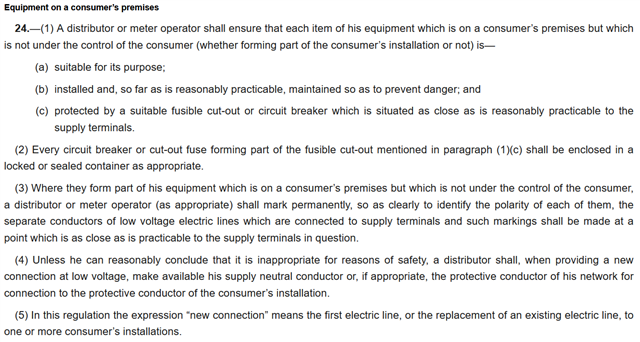I appreciate that @aligarjon had already posed a question about the responsibility boundaries at cut-out and meter.
But I have a friend who recently suffered a small (fortunately contained) fire caused by a meter tail pulling out of the RCD on the feed side (downstream from the meter). The RCD had been installed by his solar PV installers and a couple of years later his meter was changed by EON, along with the meter tails to the RCD. The feed side terminals of the RCD are enclosed and not accessible by the consumer, as are the terminals to the meter and cut-out.
Notwithstanding the parallel problem of the energy company removing the incoming earth connection to the property when they changed a pole-mounted transformer without confirming that there was a local earth, which resulted in some interesting potential levels when the fault occurred, who is responsible for ensuring that the installation is in good order and is to a sound standard, if the consumer is not permitted access to inspect everything?
So far he is getting the expected runaround from the energy company, the supply company and OFGEM, possibly in the hope that he will go away and sort it all out for himself, but unfortunately this is not a guy who goes away quietly when he senses an injustice or wrongdoing, but he's also an engineer with a problem-solving mindset, so doesn't accept administrative brush-off.
I'd appreciate some guidance, thank you.
